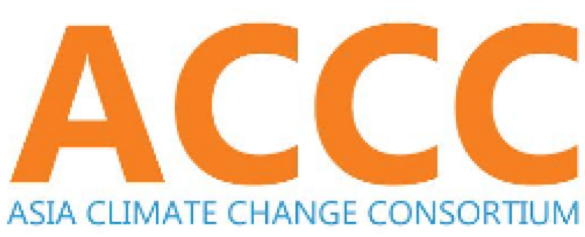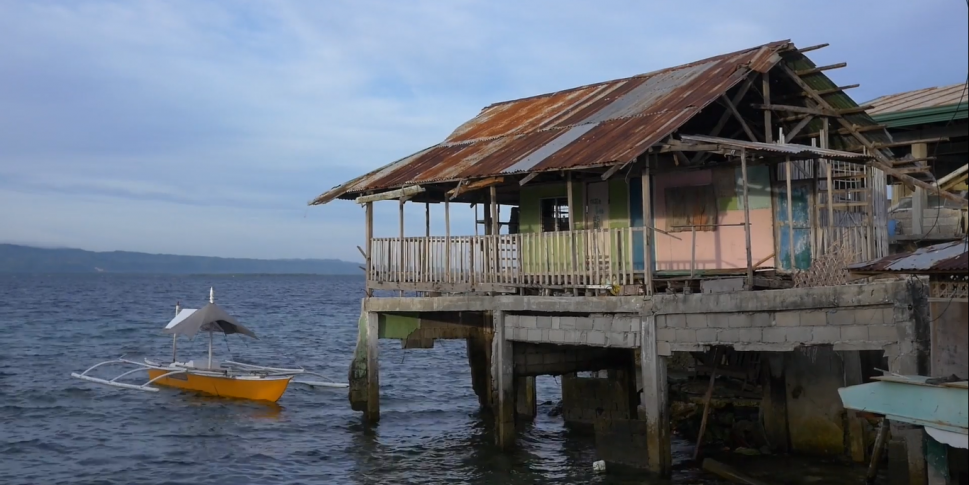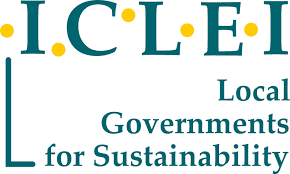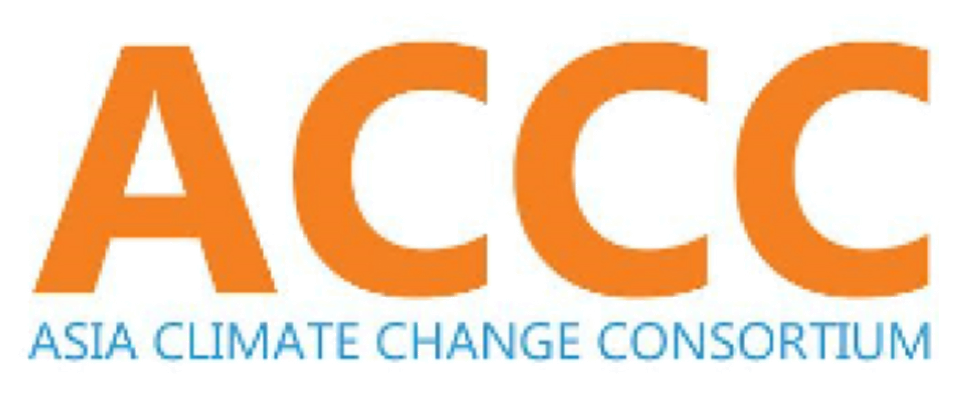1. Introduction
Climate Change implications on life, livelihoods and ecosystems have been pointed as an emerging risk in the entire world[1]. In Asia, millions of people are critically exposed to different types of climate change related hazards including rising temperature, drought, heavy rainfall, landslides, water logging, flood/flash flood, cyclone and storm surges, sea level rise, salinity intrusion and so on. These climatic hazards may result to damage of household properties, contamination of water sources, increase in climate sensitive diseases and loss of livelihoods in many of the countries in Asia[2]. IPCC[3] clearly states that “Rising temperature increases likelihood of the threat of heat waves across Asia, droughts in arid and semiarid areas of West, Central and South Asia, floods in monsoon regions in South, Southeast and East Asia, and glacier melting in the Hindu Kush Himalaya region”. This report has indicated that climate change already caused direct loss and damages in different sectors including food production, water resources, ecosystems, infrastructures and health of human being in Asia. There are robust evidences that the loss and damages due to increased climate variability and extreme events are influencing migration flows across Asia. For example, Bangladesh, China, India and the Philippines each experienced more than 4 million disaster-induced displacements in 20193. It was also reported that cyclones, floods, and typhoons triggered internal displacement of 9.6 million people, almost 30% of total global displacements in 2019 in Southeast and East Asia.
According to World Meteorological Organization (WMO), Asia accounts for almost one-third (31%) of weather, climate and water related disasters occurred globally. Asia also accounts for close to half of deaths (47%) and one-third (31%) of associated economic losses[4].
Many countries will no longer have time to adapt and, thus, losses and damage will be certain if the matter is unaddressed. Climate change aggravates underlying issues (poverty, inequality, disempowerment, land and housing tenurial insecurity, lack of access and control over natural resources ) that leads to loss and damages.
2. Policy (from the desks) into Actions (on the ground)
In 2013 at COP 19, the Warsaw International Mechanism for Loss and Damage was established which led to the inclusion of the loss and damage article in the Paris Agreement. Further negotiation proceeded through building Santiago Network on Loss and Damage at COP 25 and forming Glasgow Dialogue on Finance for Loss and Damage at COP 26. But none of these COPs could reach a consensus regarding creating separate funding mechanisms. Despite the setbacks, the climate-vulnerable countries kept pushing for their demands.
Following the outcomes of COP 26, establishing separate funding arrangements has been the prime focus of this summit’s negotiations. Though the COP-27 has been successful in terms of reaching an agreement for additional L & D funding, it will still take one year or more than that to be fully mandated with further operational details.
ACCC strongly feel that it’s appropriate time to take policy into following actions to achieve the targets and address loss and damages of the affected communities in not only Asia but also the other regions:
2.1. Operationalizing the “ Loss and Damage fund” by CoP28: The loss and damage fund must be set up by end of CoP28 to start supporting the most vulnerable communities/countries by no later than 2025. In addition, there should be no loans for loss and damage fund, it should be through grants.
2.2. Operationalization of “Santiago Network on Loss and Damage (SNLD)”: The full institutional arrangement of the Santiago network for averting, minimizing and addressing loss and damage associated with the adverse effects of climate change must be in place as quickly as possible in accordance with CoP27 decisions.
2.3. Establishing innovative/alternative sources of finance for loss and damage: Imposing carbon tax on the polluters could be one of the options to raise the money for addressing loss and damages. An estimation shows that USD 50 Billion could be raised in a year if USD 2 levy is imposed on every ton of carbon dioxide from burning fossil fuel (Huq, 2023).
2.4. UNFCCC to support establishing National/Regional level L&D Mechanism: Provide support for setting up of institutional and policy frameworks that will accommodate financial support and/or generate/mobilize resources to address loss and damage at the national and regional levels and facilitates coherent, effective and efficient implementation
2.5. Resilience interventions that need financial support (reviewed and modified from ACCC’s submission in 2019):
2.5.1. Anticipatory actions for resilience
2.5.1.1. Improve EWS to avoid risks against rapid and slow onset events
2.5.1.2. Setting up the registry of at-risk populations and data management
2.5.1.3. Climate proof infrastructures to protect from the climate havoc
2.5.1.4. Innovations leading to resilience particularly in livelihoods, social cohesion food and water systems, ecosystems and infrastructure
2.5.1.5. Land-use planning informed by climate-related risk assessments
2.5.1.6. Risk transfer mechanisms that specifically address climate change-related risks to avoid loss and damage.
2.5.2. Actions that will enable communities to absorb and accommodate unavoidable climate hazards
2.5.2.1. Invest in building social capital and cohesion in all communities not only among the most vulnerable and the geographically-isolated areas but also among highly dense settlements but where social capital is low;
2.5.2.2. Enhancement of primary, secondary and tertiary health care services especially in areas with highly vulnerable populations to reduce susceptibility to climate change associated hazards;
2.5.2.3. Develop climate-resilient infrastructures especially those that are needed to deliver essential services and provide temporary safe shelters where needed;
2.5.2.4. Enhance resilience of food systems, water systems and ecosystems to ensure food and water security and secure livelihood assets;
2.5.2.5. Finance initiatives that address multi-dimensional inequalities and address the need for social protection that enhance capacities and reduce dependencies and vulnerabilities especially of the displaced populations;
2.5.2.6. Inclusion of marginalized and undocumented sectors in capacity building measures to address vulnerabilities
2.5.3. Actions that will help communities recover from impacts of climate change-related events
2.5.3.1. Risk insurance coverage specifically for the most vulnerable sectors who are most-at-risk and often times excluded from risk insurance or unable to pay for high insurance premiums because of their risk status;
2.5.3.2. Community-lead and managed ecosystems restoration: The case of Haiyan in the Philippines saw the destruction of vital coastal and marine ecosystems as well as terrestrial farming ecosystems. Failure to restore those ecosystems will have devastating impacts in livelihoods and will encourage displacement;
2.5.3.3. Asset restoration: shelter and livelihood assets in particular;
2.5.3.4. Safe, secure and acceptable settlements for displaced populations;
2.5.3.5. Psycho-social support and health care honoring following loss and damage;
2.5.3.6. Recovery measures that promote co-benefits in mitigation, adaptation and resilience in the recovery process;
2.6. Interventions that require financial support to address Non-Economic Loss and Damage (NELD)
2.6.1. Restoration of human dignity
2.6.1.1. Legal support for the restoration of identity – many of those who suffer loss and damage will have lost their basic identification records as citizens of States, thus, unable to secure services, assistance, recognition from their own governments;
2.6.1.2. Shelter, clothing, food, service deliver that befit the status of human beings worthy of respect and honor consistent with Core Humanitarian Standards;
2.6.2. Restoration of natural habitats, cultural and social heritage
2.6.2.1. Measures for restoration of natural ecosystems and environmental resources.
2.6.2.2. Multi-stakeholder and community-owned restoration of cultural and historical artifacts vital to the identities of peoples and communities;
2.6.2.3. Support for community-led, determined and owned activities facilitating the restoration of social capital and promoting social cohesion;
2.6.3. Protection of the basic human rights of those in caught in climate-induced migration and support rights-claiming initiatives;
2.6.4. Institutional arrangement for research and monitoring on NELD
[1] Hoegh-Guldberg, O., D. Jacob, M. Taylor, M. Bindi, S. Brown, I. Camilloni, A. Diedhiou, R. Djalante, K.L. Ebi, F. Engelbrecht, J.Guiot, Y. Hijioka, S. Mehrotra, A. Payne, S.I. Seneviratne, A. Thomas, R. Warren, and G. Zhou, 2018: Impacts of 1.5ºC Global Warming on Natural and Human Systems. In: Global Warming of 1.5°C. An IPCC Special Report on the impacts of global warming of 1.5°C above pre-industrial levels and related global greenhouse gas emission pathways, in the context of strengthening the global response to the threat of climate change, sustainable development, and efforts to eradicate poverty [Masson-Delmotte, V., P. Zhai, H.-O. Pörtner, D. Roberts, J. Skea, P.R. Shukla, A. Pirani, W. Moufouma-Okia, C. Péan, R. Pidcock, S. Connors, J.B.R. Matthews, Y. Chen, X. Zhou, M.I.Gomis, E. Lonnoy, T.Maycock, M.Tignor, and T. Waterfield (eds.)]. In Press.
[2] Revi, A., D.E. Satterthwaite, F. Aragón-Durand, J. Corfee-Morlot, R.B.R. Kiunsi, M. Pelling, D.C. Roberts, and W. Solecki, 2014: Urban areas. In: Climate Change 2014: Impacts, Adaptation, and Vulnerability. Part A: Global and Sectoral Aspects. Contribution of Working Group II to the Fifth Assessment Report of the Intergovernmental Panel on Climate Change [Field, C.B., V.R. Barros, D.J. Dokken, K.J. Mach, M.D. Mastrandrea, T.E. Bilir, M. Chatterjee, K.L. Ebi, Y.O. Estrada, R.C. Genova, B. Girma, E.S. Kissel, A.N. Levy, S. MacCracken, P.R. Mastrandrea, and L.L. White (eds.)]. Cambridge University Press, Cambridge, United Kingdom and New York, NY, USA, pp. 535-612.
[3] IPCC Sixth Assessment Report: Fact Sheet-Asia, Climate Change Impacts and Risks. Working Group II. Impacts, Adaptation and Vulnerability. 2022.
[4] WMO, 2022. Asia-Pacific is key to disaster risk reduction targets. https://public.wmo.int/en/media/news/asia-pacific-key-disaster-risk-reduction-targets





 c/o Rice Watch Action Network
c/o Rice Watch Action Network